AT RAVENS NEST NATURE SANCTUARY
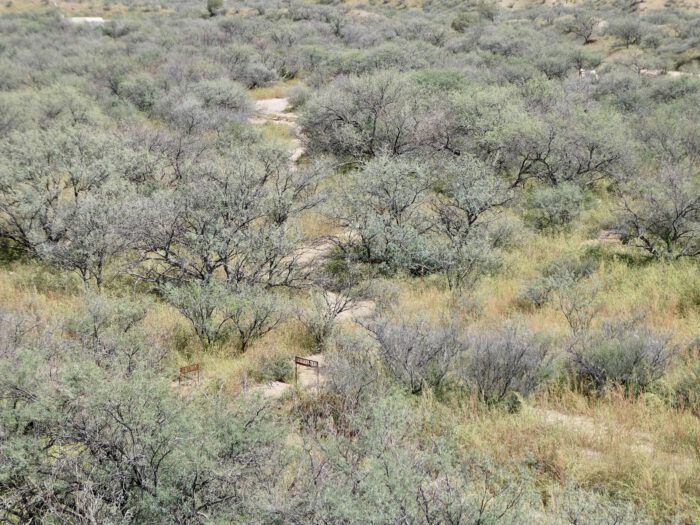
Artfully weaving their way throughout Raven’s Nest Nature Sanctuary are an extensive system of groomed, well-marked Nature Trails. Approximately 6 miles of paths infiltrate every corner of the preserve – from intimate, wooded bottomlands to uplands with sweeping vistas of nearby Sky Islands mountain ranges. Carefully laid out to showcase the diverse habitats and topography at the preserve, collectively our Nature Trails take you on a journey of discovery throughout the highly diverse 42 acres. The trails weave their way through Velvet Mesquite and Catclaw Acacia Woodland and Savannah, Dwarf Woodlands, native Grasslands, a complex system of Arroyos, Ocotillo Forests, Canyons, and restored Riparian Woodlands.
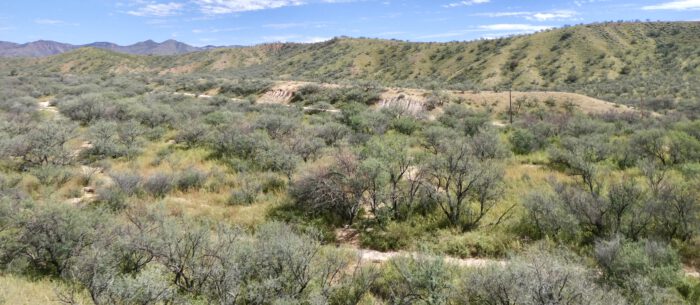
As a Wildlife Biologist and Naturalist, Vincent carefully chose the name of each trail based upon actual wildlife sightings at Raven’s Nest. Hence, the Gray Hawk Trail meanders not far from where a pair of these Neotropical raptors have a nest. Similarly, the long Sonoran Toad Trail encompasses an area with several seasonal breeding pools of this largest U.S. Toad. The list goes on – the Jackrabbit, Vulture, Whiptail, Raven, Coral Snake and other trails all speak to the high levels of biodiversity at the sanctuary.
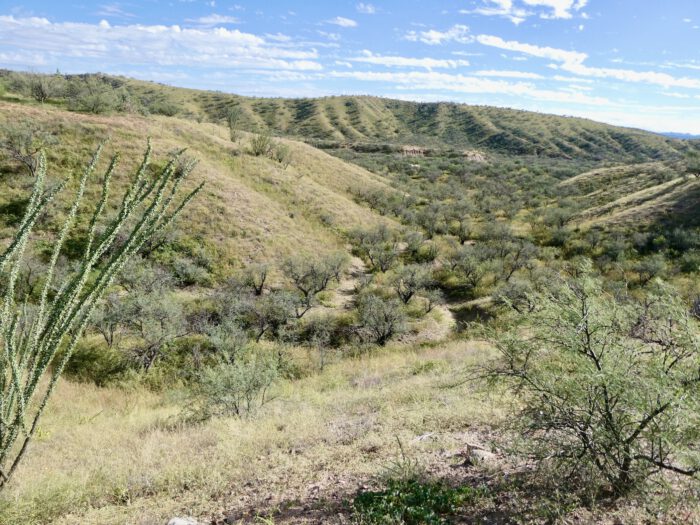
Our Nature Trails vary from leisurely rambles to hill-climbing heart-pounders and from dense, intimate woodlands to expansive views of the local Sky Island mountain ranges. Several trails have benches affording a quiet sit in Nature, while others have shade ramadas for a cool respite. All told, the trails allow you to enjoy the totality of Raven’s Nest Nature Sanctuary – at your leisure, for wildlife viewing, and through the seasons. The following is a thumbnail sketch of the Nature Trails at the preserve.
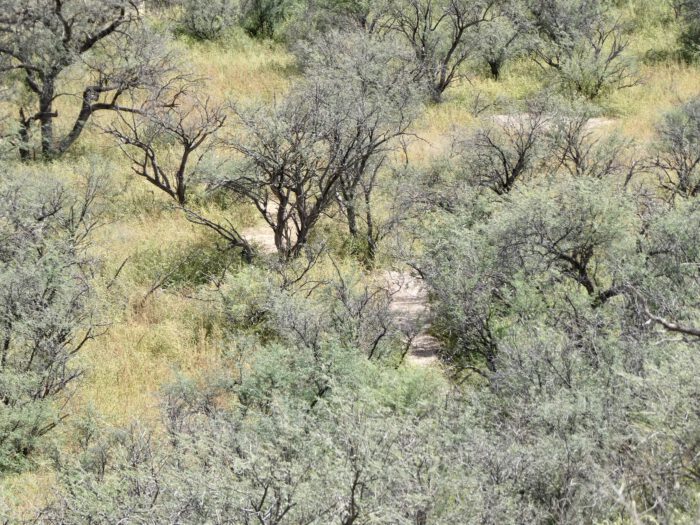
Sky Islands Vista Trail

This set of interconnected paths loops around the house. From the commanding viewpoints you can see several Sky Island mountain ranges, in particular the Patagonias and Pajaritas. The habitats along the trail include native Grasslands punctuated with trees and succulents, as well as a Dwarf Woodland. The trail is an excellent place to spot resident and migrating raptors, such as Zone-tailed Hawks and Golden Eagles.
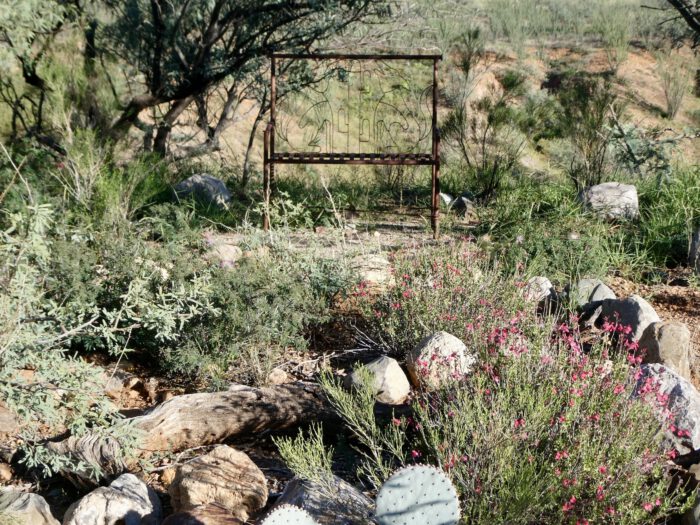
Lizard Labyrinth
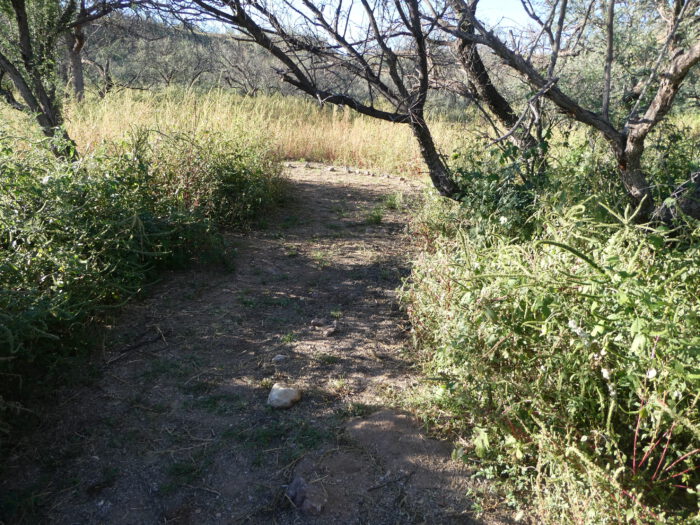
Connected to the Sky Islands Vista trail, this curving set of entwined paths provides an opportunity to thoughtfully stroll through a Dwarf Woodland. The paths also lead to the Organic Orchard and Organic Raised Garden Beds by the house.
Box Turtle Trail
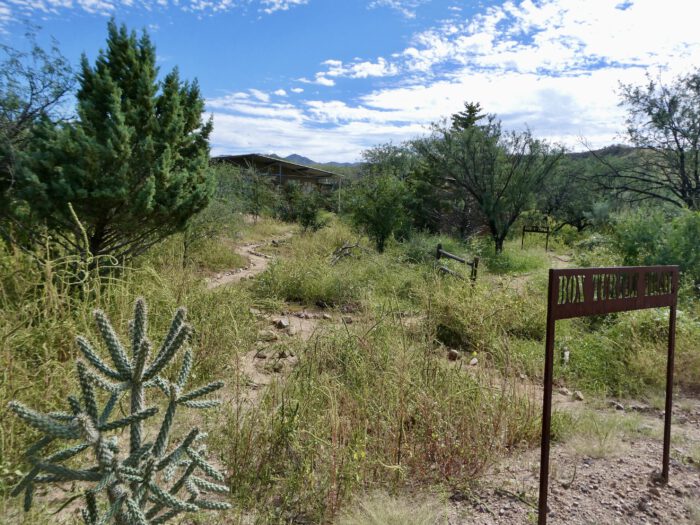
This multifaceted trail takes you by several Wildlife Ponds, including one with a Wildlife Blind, and past the Sky Islands Discovery Center. Ultimately, the Box Turtle Trail leads to Safari Camp, with many comfortable sitting options available along the way. Overall, the trail meanders through a restored Riparian Woodland, making for first-class birding and wildlife watching. White-tailed Deer, Collared Peccaries, and Coyotes are all common sights along the path, while birds flock to the secluded ponds.
Gray Fox Trail
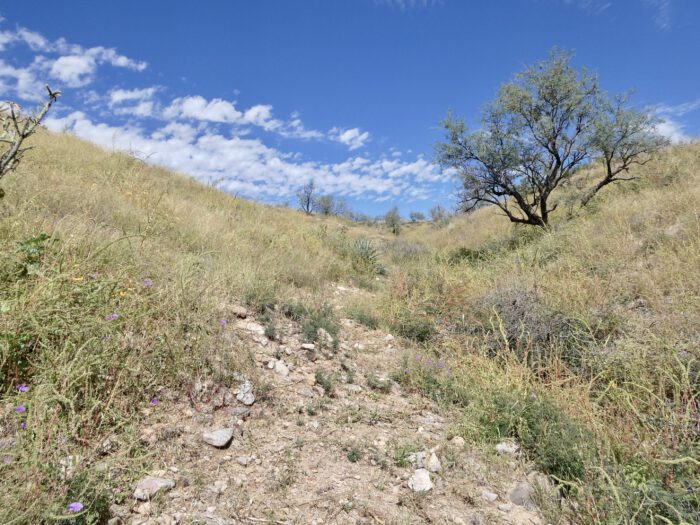
Venturing up a small canyon, this intimate trail instantly affords seclusion. Thickets of Catclaw Mimosa and Fern Acacia furnish superior cover for a wide range of birds. Spring wildflowers often opulently carpet the slopes bounding this path. Vincent once recorded a fresh Mountain Lion kill on a Mule Deer doe in this small draw – a sign of ecological health of the local habitats.
Scorpion Trail
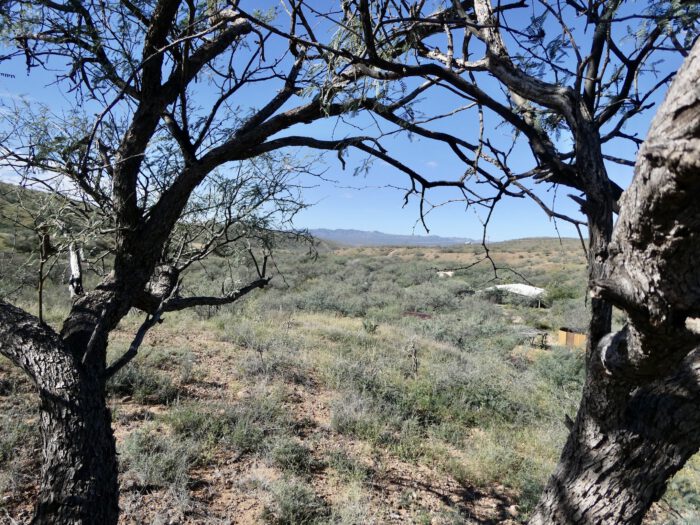 Wandering along a flat plateau, this path travels through Dwarf Woodland and native Grasslands. The elevation of the trail provides commanding views of the surrounding countryside and one of the best overviews of the land at Raven’s Nest Nature Sanctuary. A small population of Rainbow Cactus thrives along the trail, throwing up impossibly large magenta flowers in late spring.
Wandering along a flat plateau, this path travels through Dwarf Woodland and native Grasslands. The elevation of the trail provides commanding views of the surrounding countryside and one of the best overviews of the land at Raven’s Nest Nature Sanctuary. A small population of Rainbow Cactus thrives along the trail, throwing up impossibly large magenta flowers in late spring.
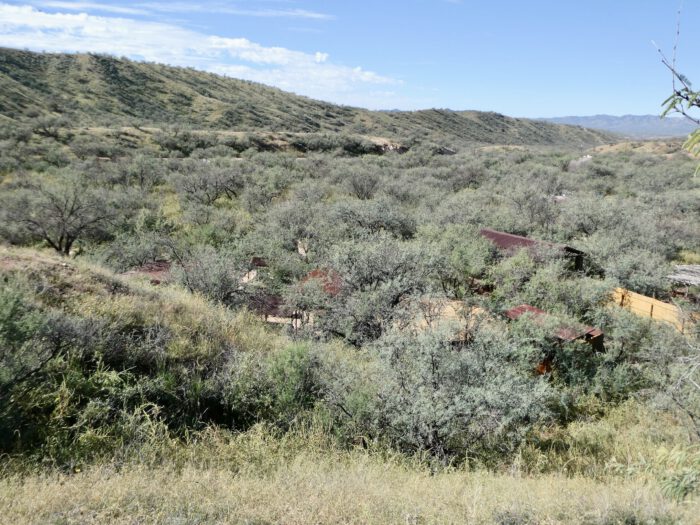
Javelina Trail
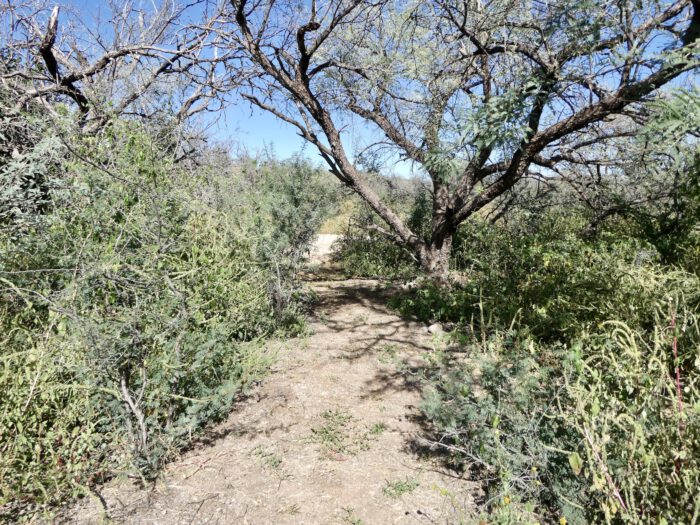
Leading you away from Safari Camp, this winding trail travels through Velvet Mesquite and Catclaw Acacia Woodland. Travelers have an opportunity to enjoy both large and small arroyos where various wildlife sightings are common. Watch for Greater Roadrunners hunting reptiles and other small prey along the path.
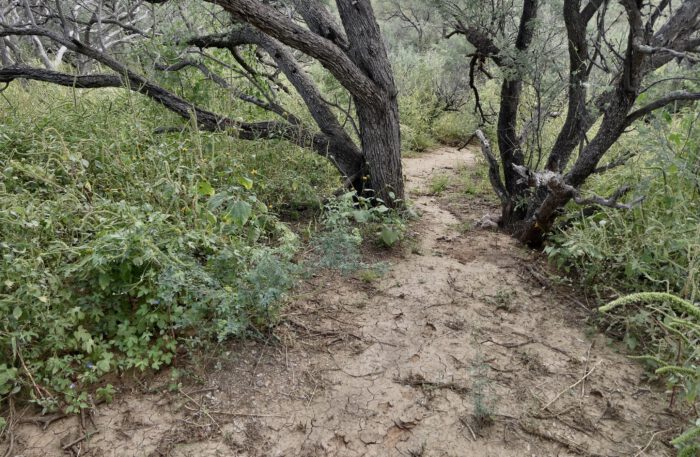
Sonoran Toad Trail

This path is the best option for exploring the main arroyo system and associated Velvet Mesquite and Catclaw Acacia Woodlands at Raven’s Nest. Wildlife tracks and scat are common finds in the arroyo sands, in particular hinting at the mammalian and reptilian diversity at the preserve. Ancient Native American artifacts are a rarer, yet thrilling discovery. Greater Earless Lizards often can be seen darting at breakneck speed along an arroyo, while at night Sonoran Desert Toads look to fill the cavernous maws with various small creatures. Thorny thickets provide fawning areas for White-tailed Deer and nesting cover for many bird species, including colorful Varied Buntings.
Roadrunner Link
 This short trail connects the Sonoran Toad Trail and the Raccoon/Juniper Trail, running along a split of the main arroyo.
This short trail connects the Sonoran Toad Trail and the Raccoon/Juniper Trail, running along a split of the main arroyo.

Gray Hawk Trail
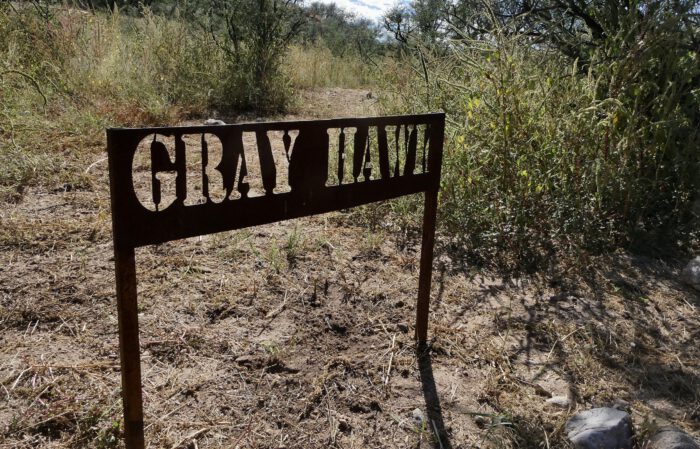
This trail traverses a combination of Woodlands and Grasslands, taking you relatively close to an annual Gray Hawk nest site. Native Grasslands now predominate, given the removal of nonnative plant species over the years. Keep your eyes peeled for wary Clark’s Spiny Lizards on the trunks and branches of the many trees. Montezuma Quail sometimes furtively travel in the thickets near the trail.
Mule Deer/Jackrabbit Trail
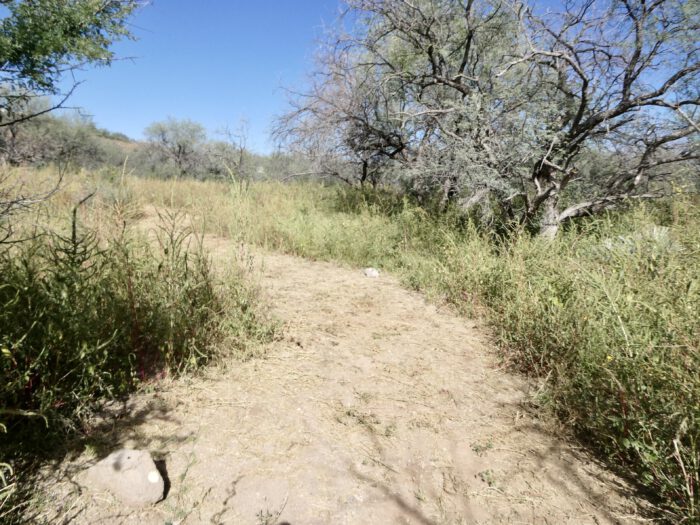
Continuing where the Sonoran Toad Trail ends, this path loops through Woodlands, thickets, and Grasslands. As reflected in its name, the habitat is a good bet for Antelope Jackrabbits, while Mule Deer more rarely venture here.
Raven Trail
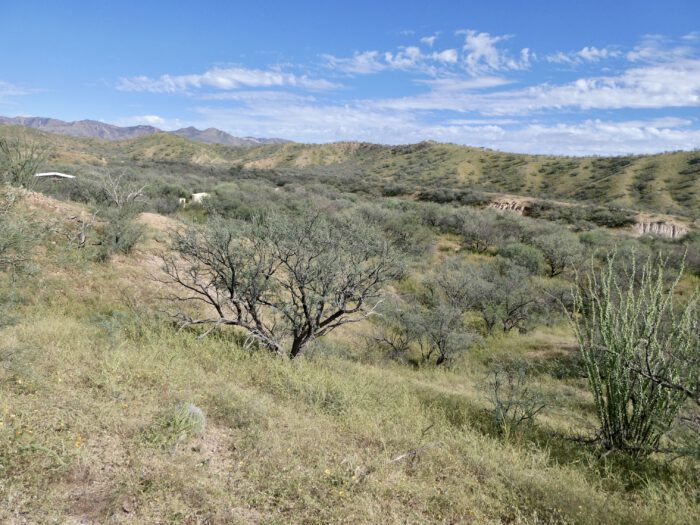
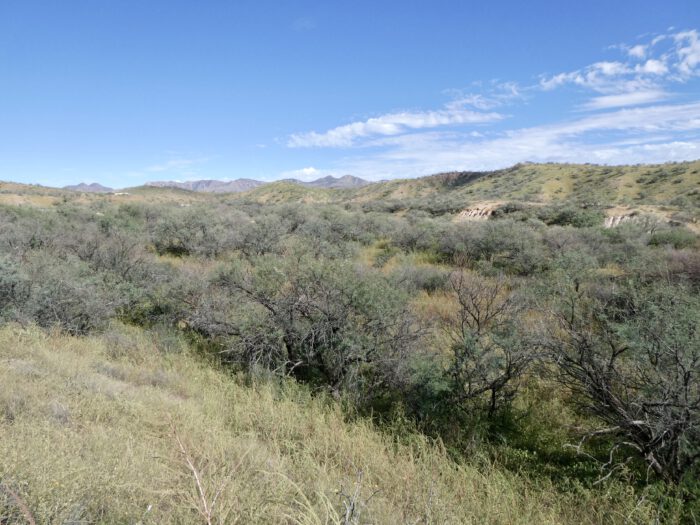
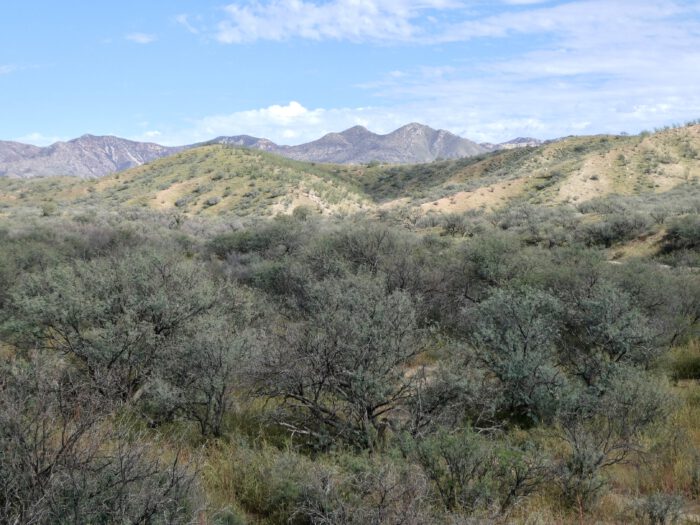
Steeply climbing from the wooded bottomlands of Raven’s Nest, this trail has captivating views of the preserve and the local Sky Islands at large. Fragrant Fairy Duster shrubs bloom in both spring and summer along the slopes, attracting many species of butterflies, as well as hummingbirds. The trail gained its name from our Common Raven nest, which also inspired the name of Raven’s Nest Nature Sanctuary.
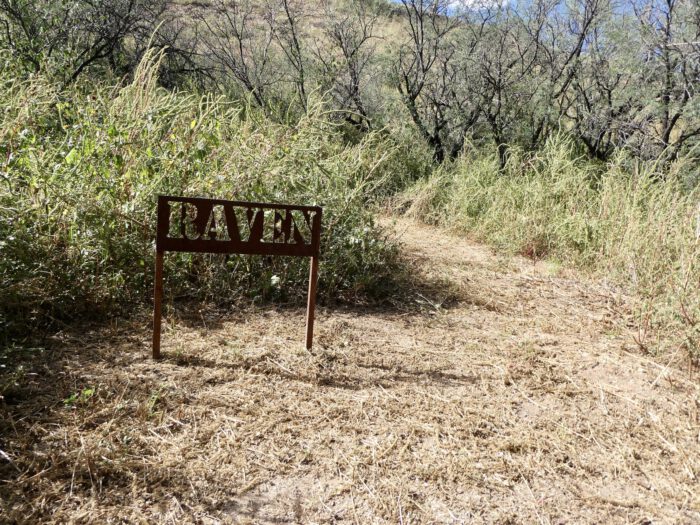
Bobcat Trail

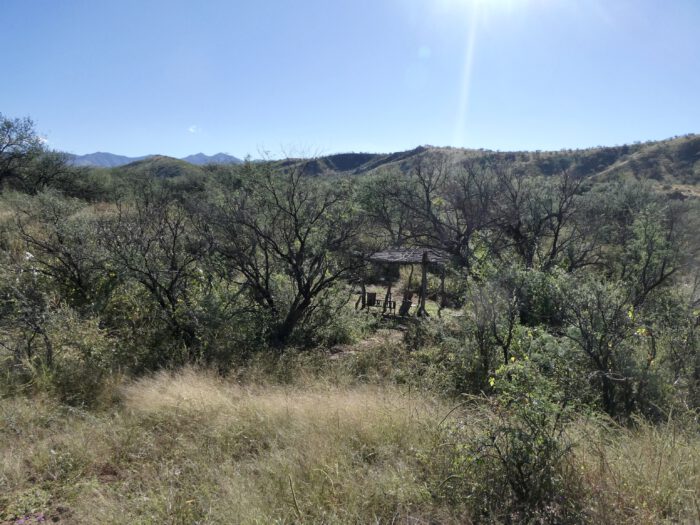
Starting in dense Woodland, this path mainly traverses a hillside seasonally covered in wildflowers, blooming Rainbow Cacti and other succulents. The variety of rocks and minerals along the trail is truly dazzling.
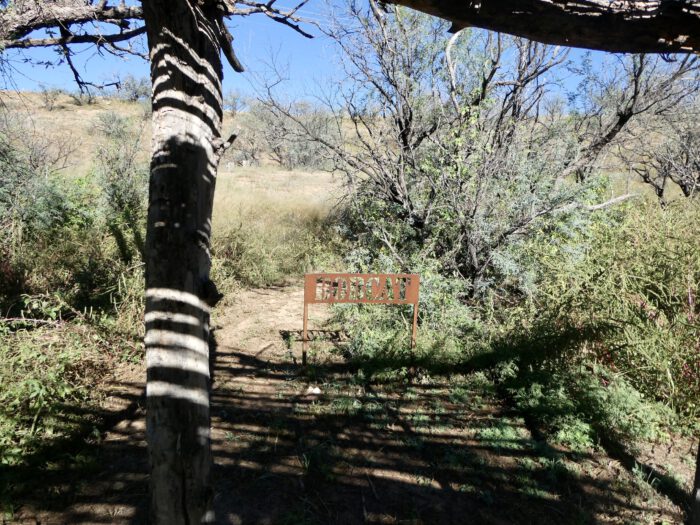
Juniper/Raccoon Trail
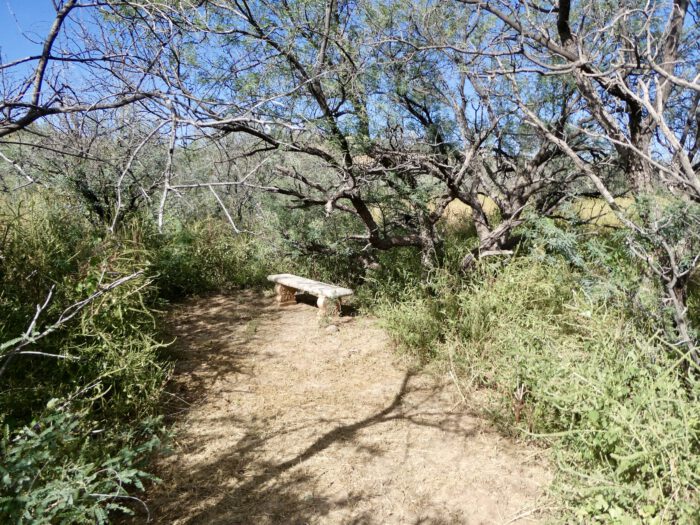
This trail describes a path through Woodlands and arroyos, seasonally abuzz with pollinators such as Carpenter Bees, White-lined Sphinx Moths, Broad-billed Hummingbirds, and Pipevine Swallowtails. A lone Arizona Juniper sits at one end of the trail, while the telltale tracks of Northern Raccoons sometimes punctuate the arroyos along the path.
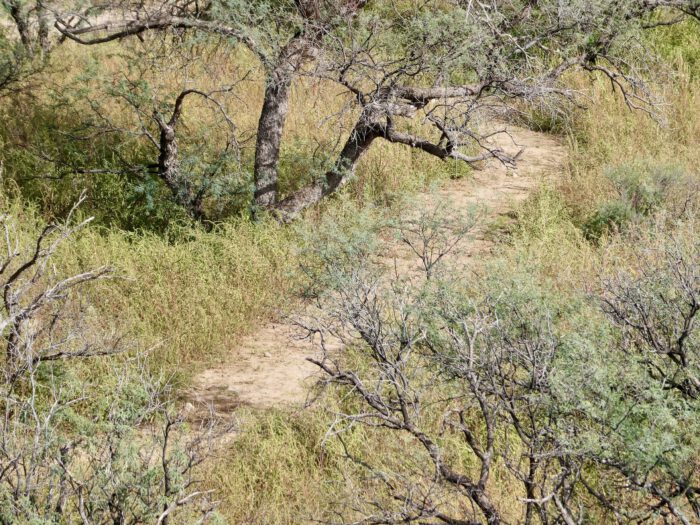
Gila Monster Trail
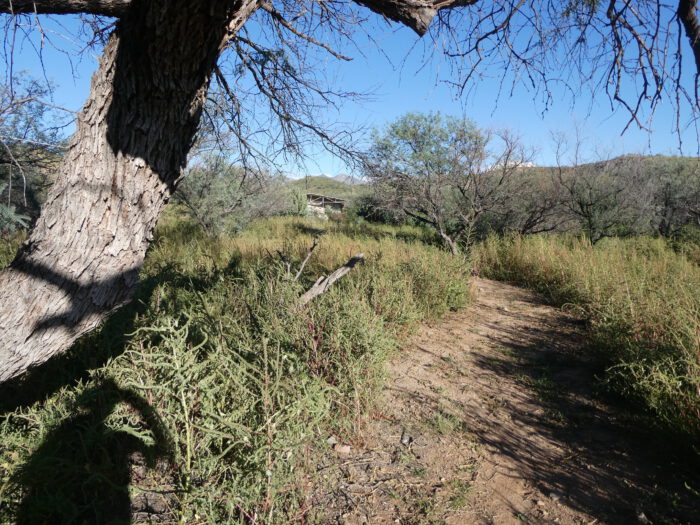
Named after the iconic, venomous lizard of fame, this trail skirts Grasslands and Woodlands – favorite hunting grounds for predatory birds such as Loggerhead Shrikes, American Kestrels, and Northern Harriers.
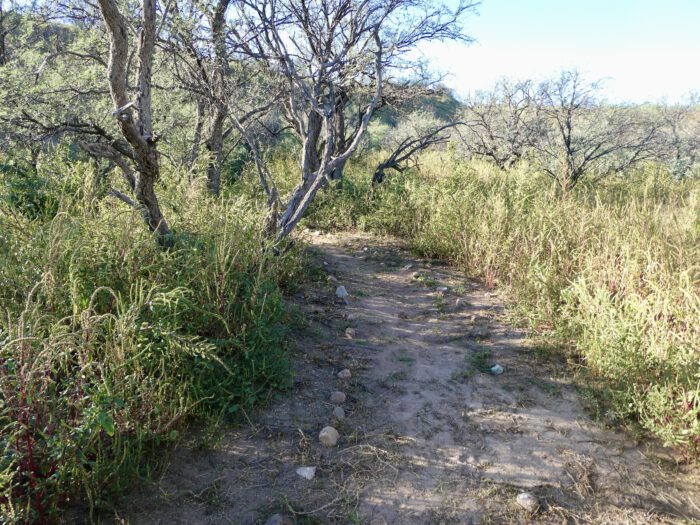
Black Hawk Trail

Starting in a densely wooded thicket, the trail is named after the Common Black Hawk – a species which nests at nearby 9,000-acre Sonoita Creek State Natural Area. Emerging from the trees, the path then crosses a grassland and wildflower meadow. There, tropical, yellow-flowered Janusia vines trellis over small trees and shrubs, while exotic-looking Mala Mujer plants keep herbivores at bay with stinging hairs.
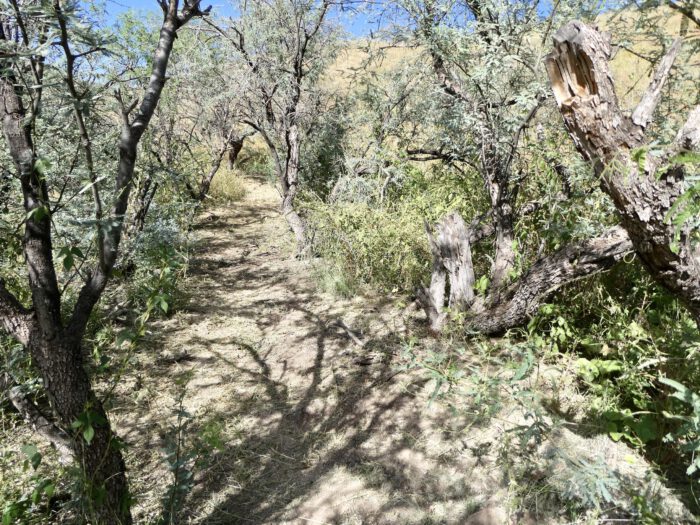
Coral Snake Trail
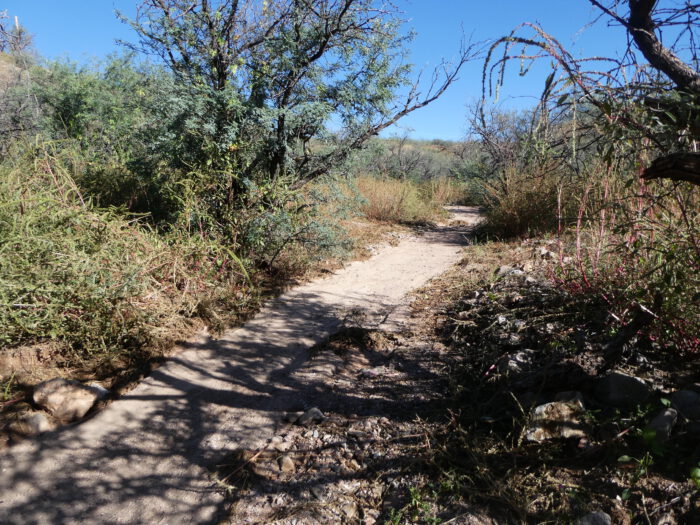
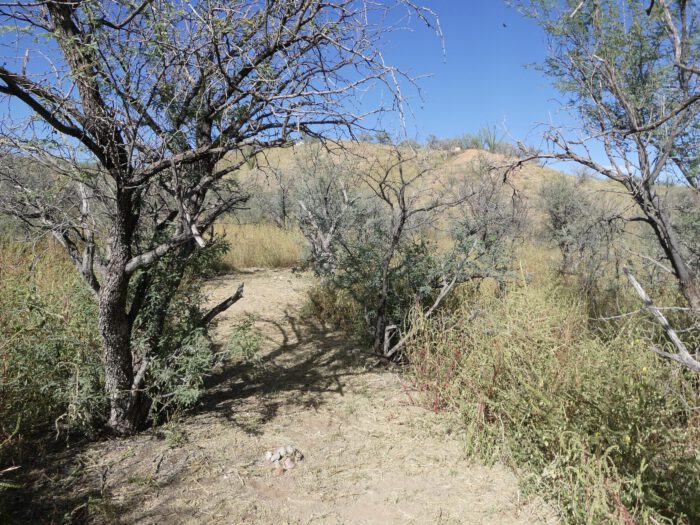
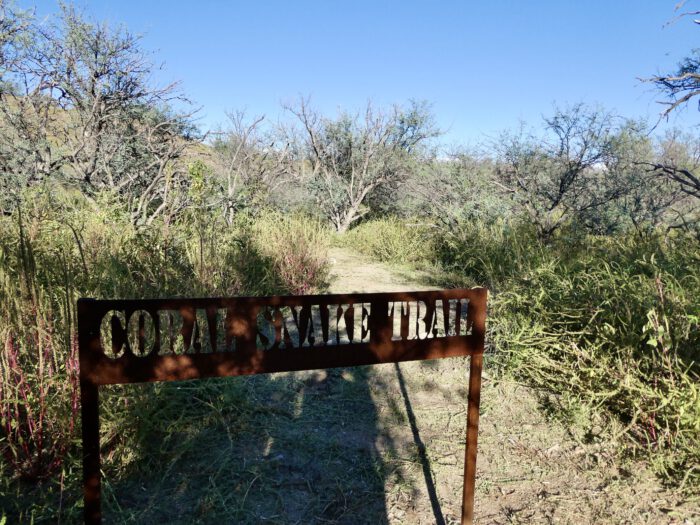 Several sightings of this venomous but small and otherwise retiring Cobra relative spawned the name of this trail. It provides a nice cross-section of common habitats at the preserve, including Arroyos, Woodlands, and Savannas. Listen and watch for seasonal sightings of warblers, vireos, orioles, and other songbirds – some of the 160 or so bird species recorded at the preserve.
Several sightings of this venomous but small and otherwise retiring Cobra relative spawned the name of this trail. It provides a nice cross-section of common habitats at the preserve, including Arroyos, Woodlands, and Savannas. Listen and watch for seasonal sightings of warblers, vireos, orioles, and other songbirds – some of the 160 or so bird species recorded at the preserve.
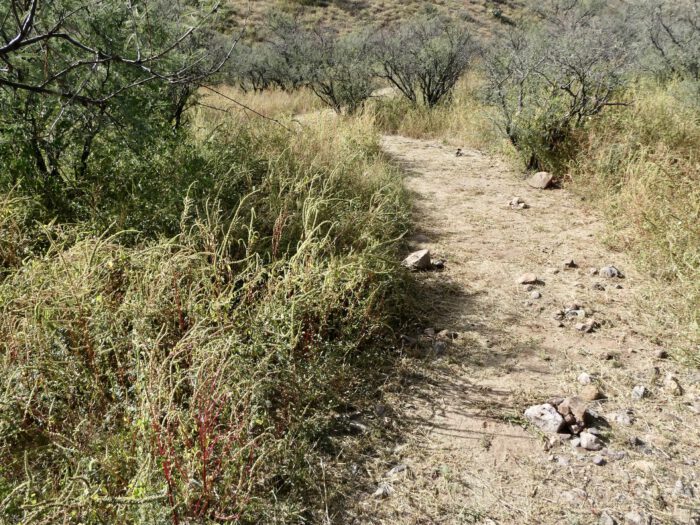
Greenhouse Trail

Named after a favorite trail of ours in the lofty Chiricahua Mountains, this path follows a sizable arroyo through the adjacent Woodland. It terminates in the largest canyon at the preserve. Lichen-covered rocks hint at the northern exposure at the north end of the trail.
Vulture Trail
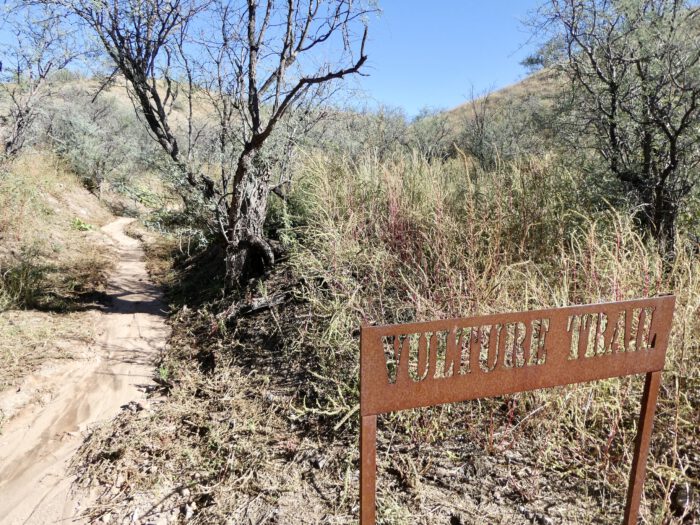
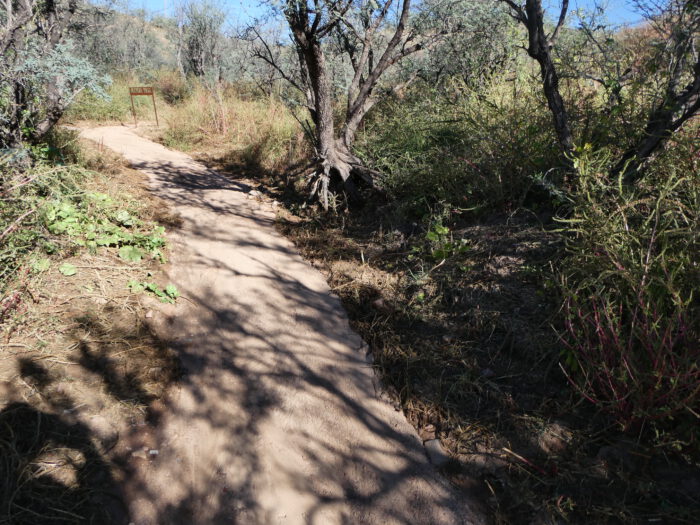
This trail leads you through the depths of a sizable canyon, where bare arroyo walls and rocky terrain prevail. The topography and cover provide excellent habitat for Bobcats and other predators. Both Turkey and Black Vultures soar above this trail at times, while a rare sighting of a male Elegant Trogon was truly awe-inspiring on a foggy January day. Also look for giant Palmer Agave succulents thriving on the rocky slopes.

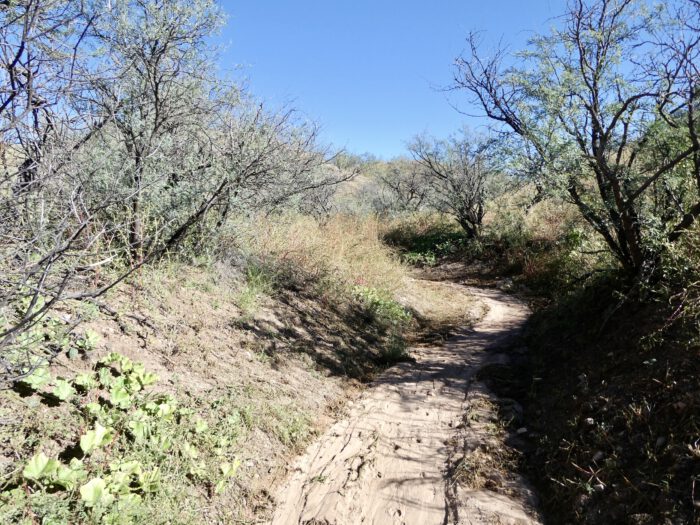
Whiptail Trail
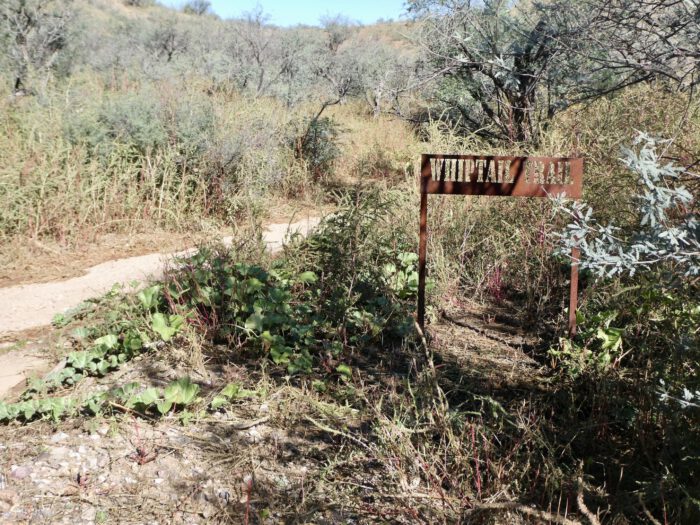
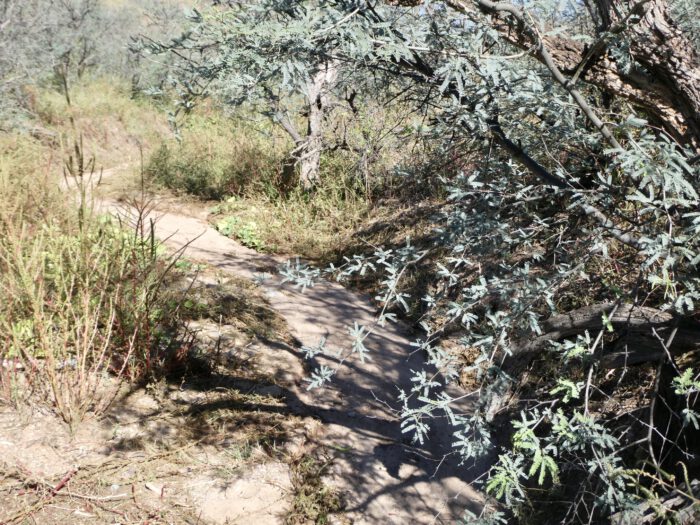
Situated entirely in a small arroyo, this path provides an intimate view of Raven’s Nest, as well as great privacy. The Wooded flats on either side of the arroyo are favorite resting and breeding sites of local Collared Peccary herds. Sonoran Spotted Whiptails – a species comprised solely of females – jerkily move along the path in search of small invertebrate prey.

Centipede Trail

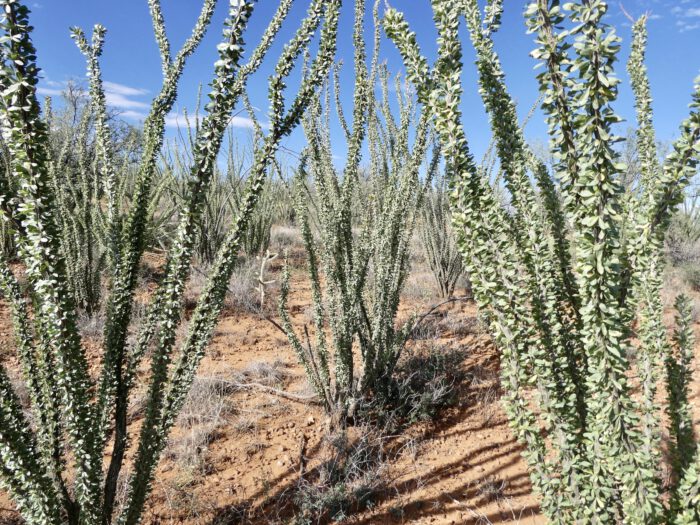
Winding its way through a strange and evocative Ocotillo Forest, this trail truly comes to life in spring. It is then that these odd succulents bloom, attracting a diverse array of birds, including: hummingbirds, Verdins, Scott’s and other Orioles, resident Lucy’s and migrating Warblers, White-winged Doves, Pyrrhuloxia’s, and many other species. The views from the Centipede Trail stretch all the way to the Patagonia Mountains.
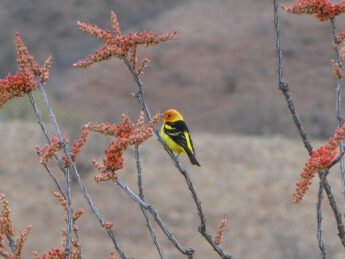
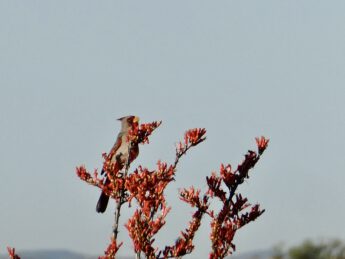
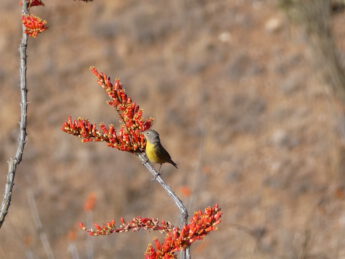

Ringtail Link
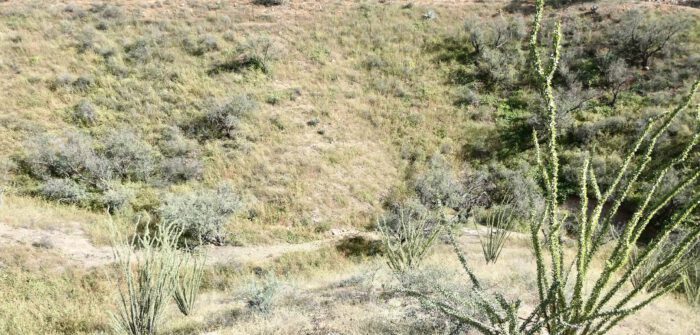
A short, steep link up a hillside, connecting the Vulture and the Centipede Trails.
Spadefoot Link

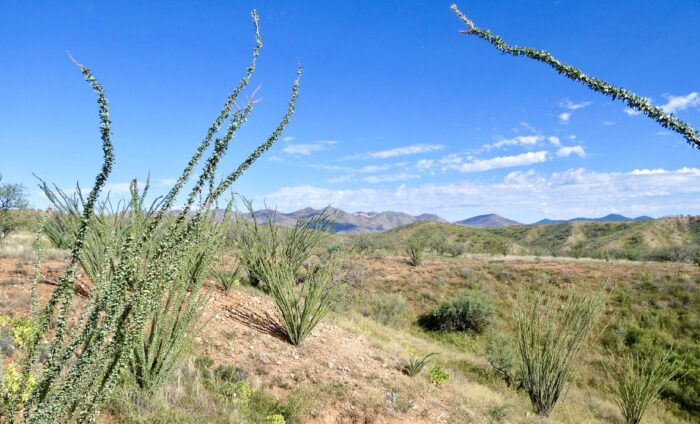
A short, steep path up a hillside, connecting the Whiptail and the Centipede Trails.
Arroyo Trails
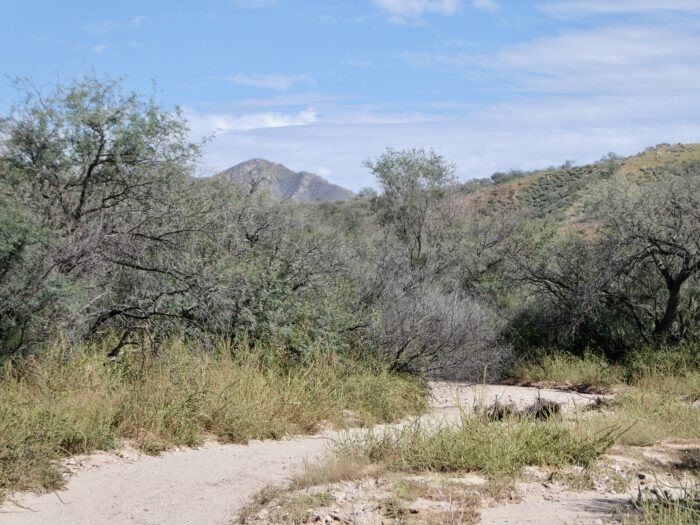
In addition to the enchanting web of Nature Trails there are also numerous pictoresque Arroyo trails on soft sand throughout the preserve. All the paths allow you to enjoy the unique world-class biodiversity at Raven’s Nest Nature Sanctuary.
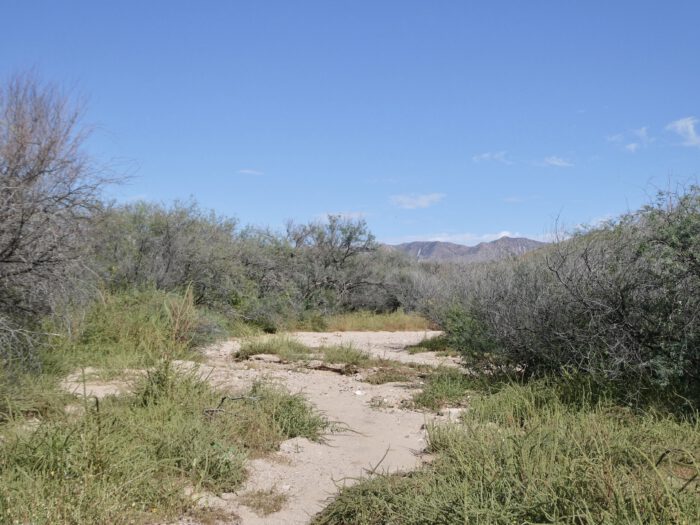
Discover Nature at your very doorstep by exploring our diverse Nature Trails.
